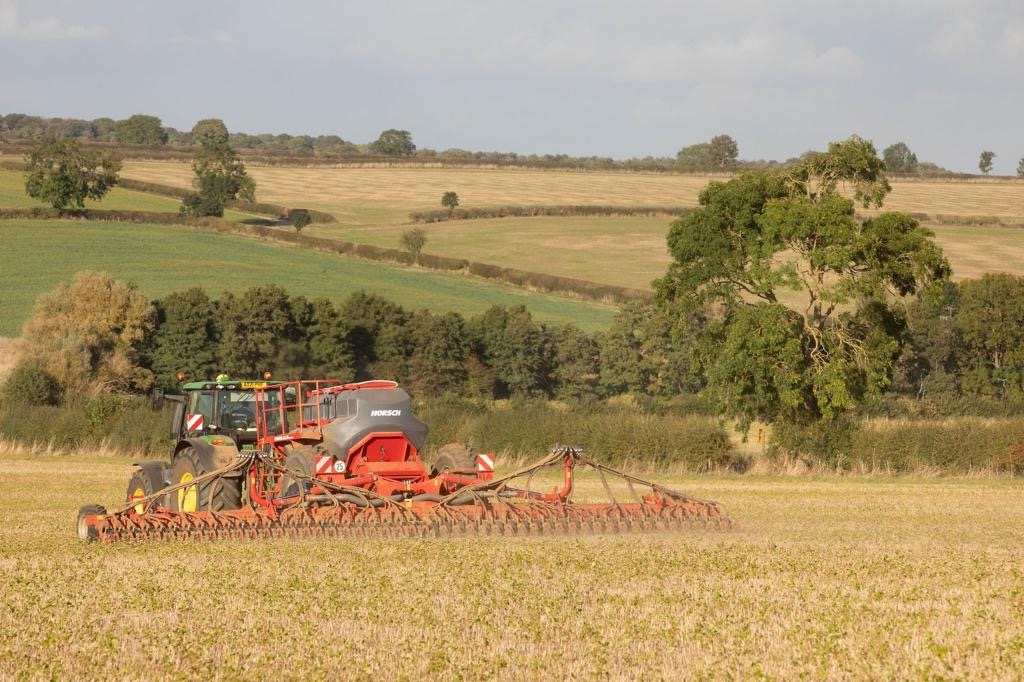
Here is a huge 12m wide drill sowing wheat in Rutland a few weeks ago. It is sowing direct into untilled ground, much as we have been doing here, with our 6m drill for the first time this year. An indication of the difference between the soft limestone soils of Rutland and the abrasive flint and chalk soils of the Dorset escarpment is the number of hectares you can sow with a single set of discs, which are the only part of the machine that engage with the soil when working. The Horsch drill above has sown over 3500ha on its original discs, whereas our Sky drill has already had to have a disc change after less than 600 hectares. At nearly £70 per disc it is quite pricey, though at least we are not wearing out any other machines.
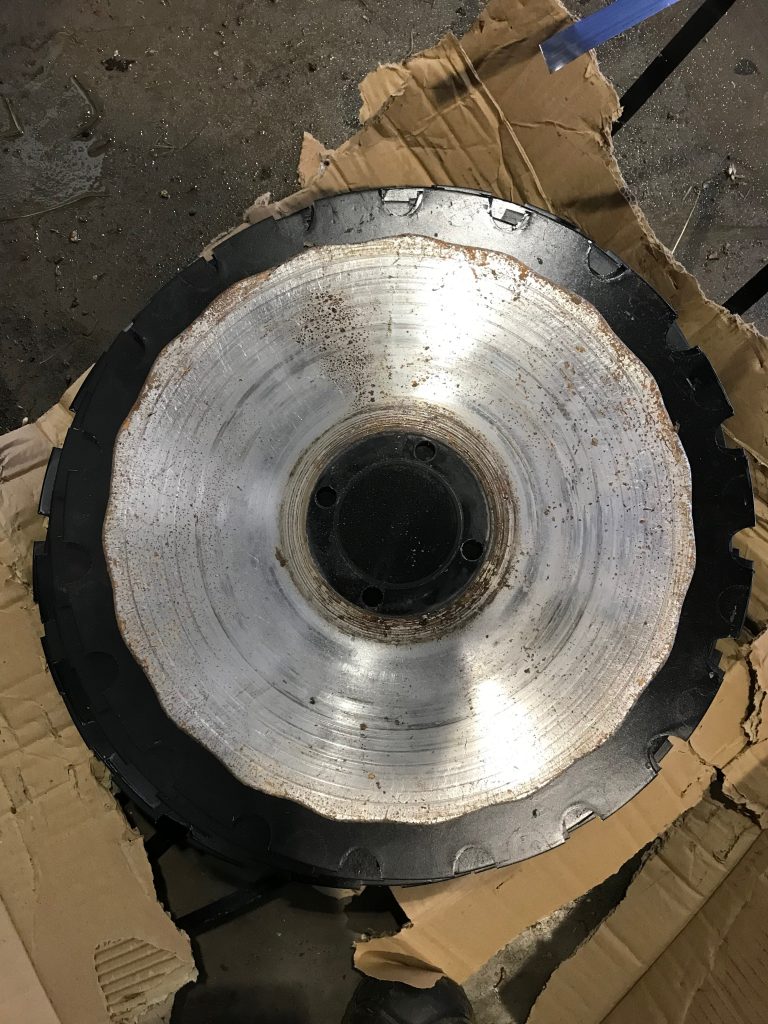
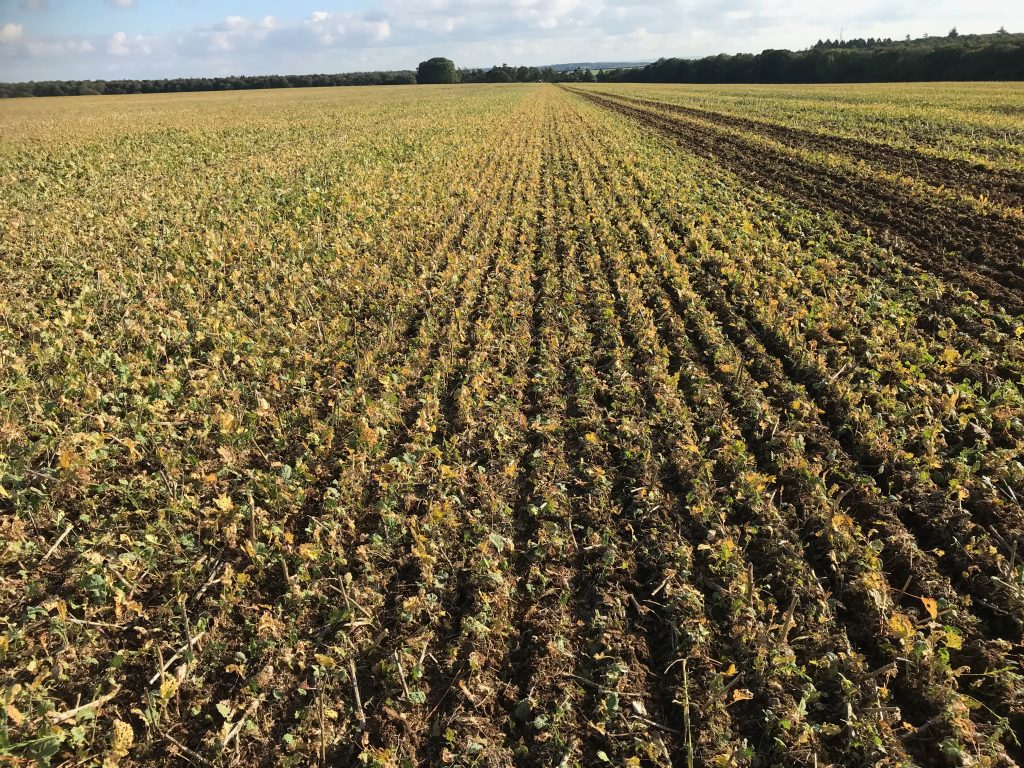
A no-tilled seedbed can look pretty awful on the day of sowing, not quite what we’ve been used to in the past, where we would prepare a perfect seedbed, and then drive the drill all over it, creating wheelmarks and sometimes over-working it. An important part of the process is that the remains of the previous crop protect the soil against heavy rain damage, until such time as the new crophas emerged and is sufficiently well grown to do the same.
Walk away for a couple of weeks, after which it can look a lot prettier, complete with a beautiful network of spiders webs, glistening in the early morning sun when just at just the right angle.
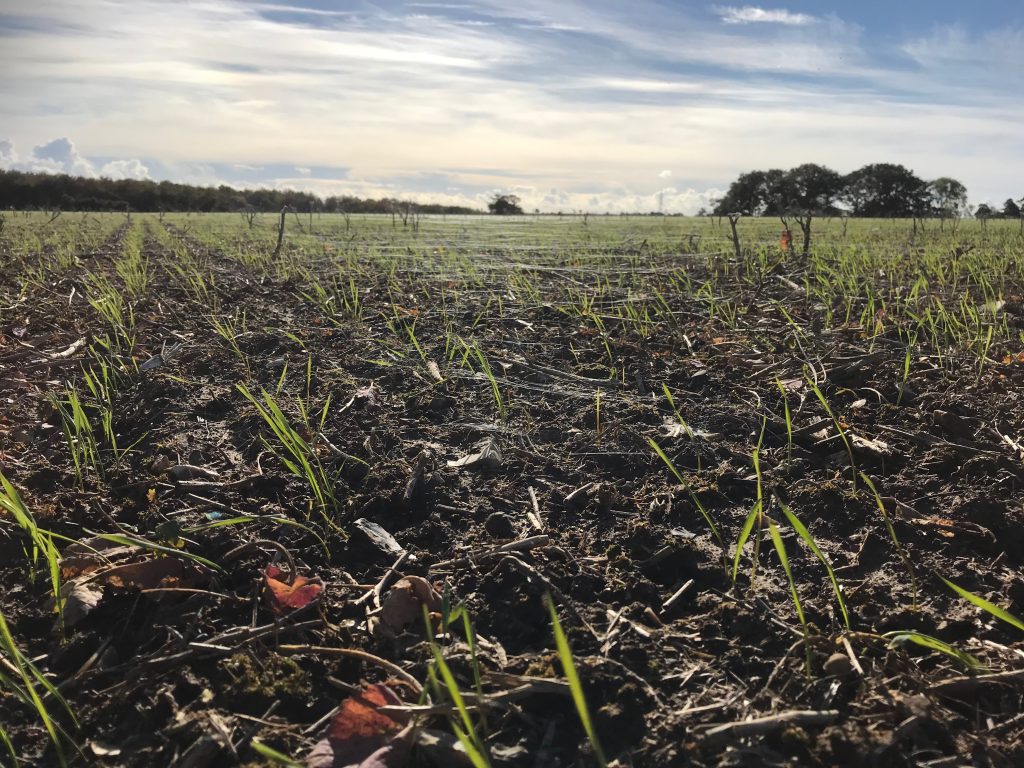
It takes a bit of getting used to sowing into such a mess, a bit of an act of faith. It is very disappointing that we have had to use more slug pellets this autumn than ever before, rather contra the supposedly eco flavour of moving into direct drilling, mainly for soil health reasons, however our agronomist tells us that it is a very bad year for slugs following all types of cultivation, even ploughing.
Should we have charged around with a stubble rake a few times after harvest, to try to damage slug eggs, or lightly disced the soil? At the time we were keen to leave the soil undisturbed as far as possible, having sown a short term cover crop into the previous rape stubble
Let’s hope that beetle and other slug predator numbers will build in time, as the soil sorts itself out without constantly being unbalanced by cultivations or insecticides. Will the spiders’ web discourage aphids from bringing barley yellow dwarf virus into the crop? As the crops emerge in neat lines in spite of the trash on the surface, I start to believe that perhaps our mad policy change might just work………
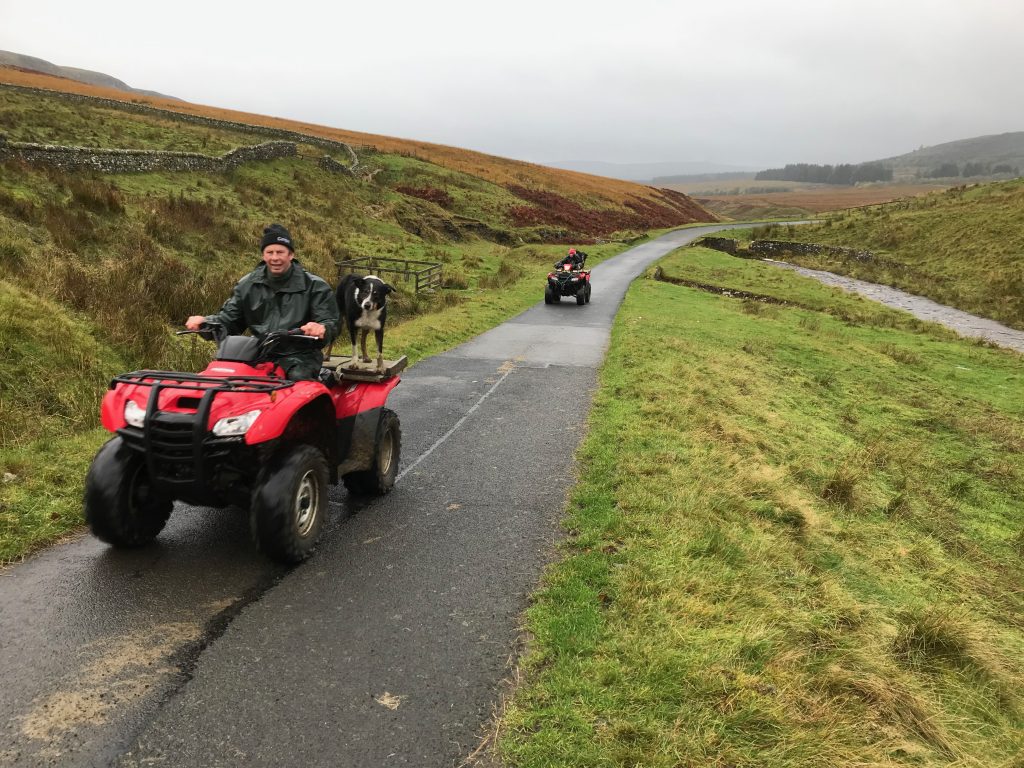
Having banged on about the importance of purely grass fed livestock to anyone who will listen over the last few months, I was brought down to earth with a bump at half term by our friends who farm sheep on the Scottish border in Northumberland. They are a real hill farm, with little more than quad bikes and collie dogs to do all the work. I was blown away when they explained to me how they have to teach every generation of new hoggs to eat sheep nuts, their lives can depend on this early life lesson. This farm often gets a good dose of snow in winter, and if they haven’t taught their stock, who spend all year on the hill, that when the grass is buried under a blanket of snow that they must eat nuts, then they will surely perish.
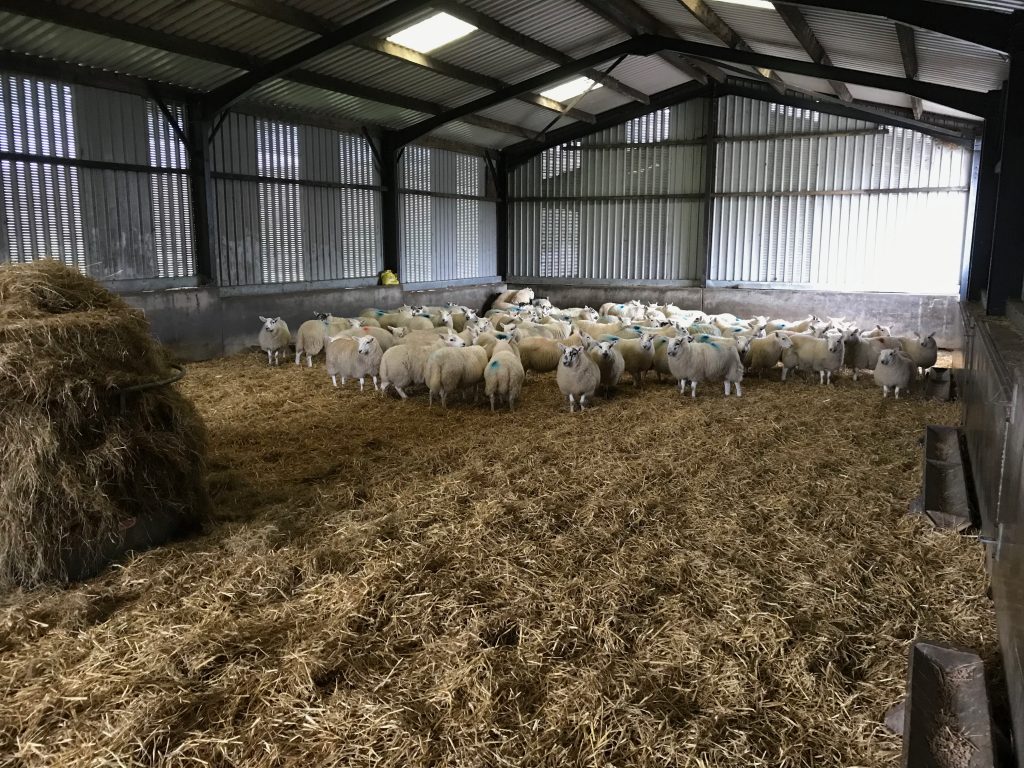
The lessons mean they have to be denied fresh grass, so they are shut in a shed with a little dry silage and are offered nuts twice daily, until the majority of them come up to feed. It can take 10 days, sheep are stubborn creatures. Last winter this farm suffered several months of snow, and what kept the sheep going was the quad bike adapted with tracks to keep it on top of the snow, towing a Snacker, which drops small piles of nuts as you drive along. Years ago hill farmers would store hay in containers strategically placed in sheltered spots or ‘stells’, and struggle out daily with an unreliable snow-mobile, to throw some hay around. The tracks on the bike are a game changer.
Seeing as this episode will hit readers’ doormats shortly before the Christmas and New Year hiatus, it must be a good time to reflect briefly on another year passing, with its trials and tribulations such as labour shortages and unhelpful trade deals, not to mention fertiliser and fuel price hikes. Best consigned to history perhaps, maybe better for the constitution to look forward to the new year with a dose of optimism, let’s face it, you can’t really be a farmer without being an optimist. So often accused of being moaners, (OK, realists), we wouldn’t plant crops or breed more animals if we didn’t believe the sun will come up tomorrow, warm rain will fall at some point, and everything will be lovely!
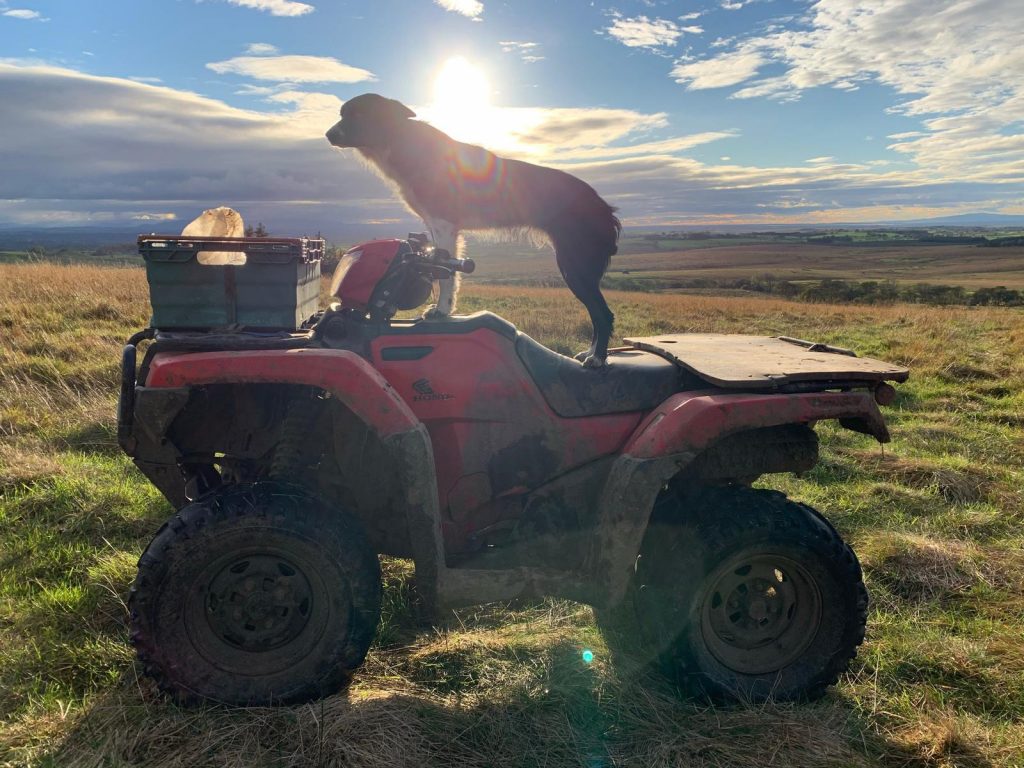
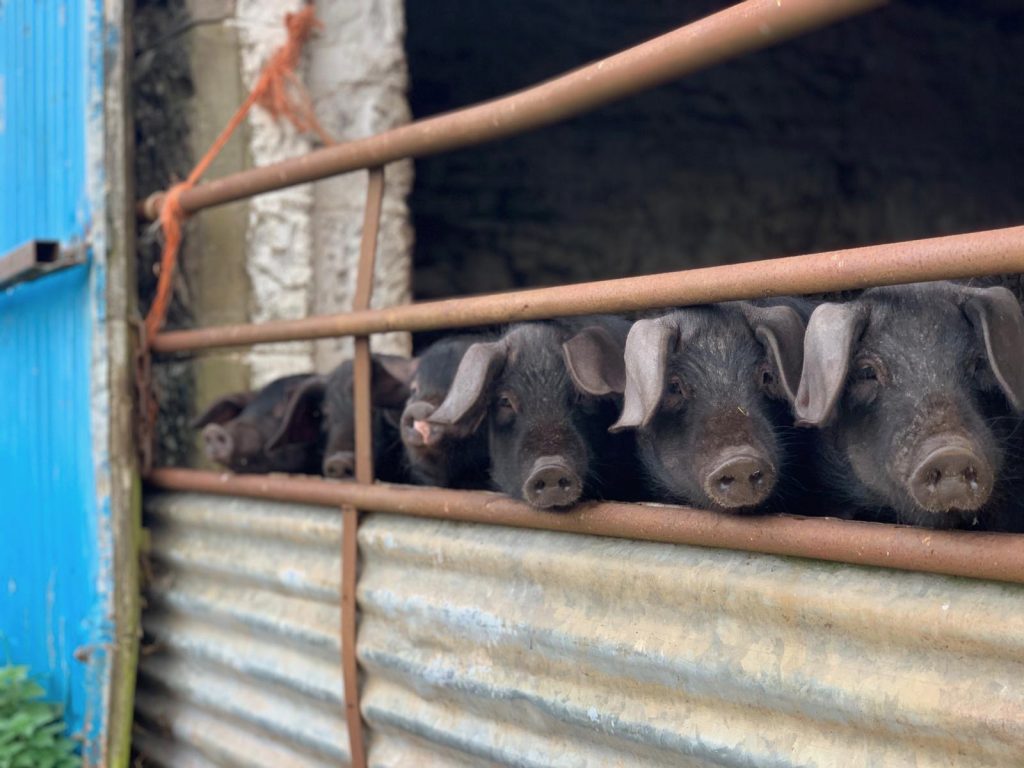
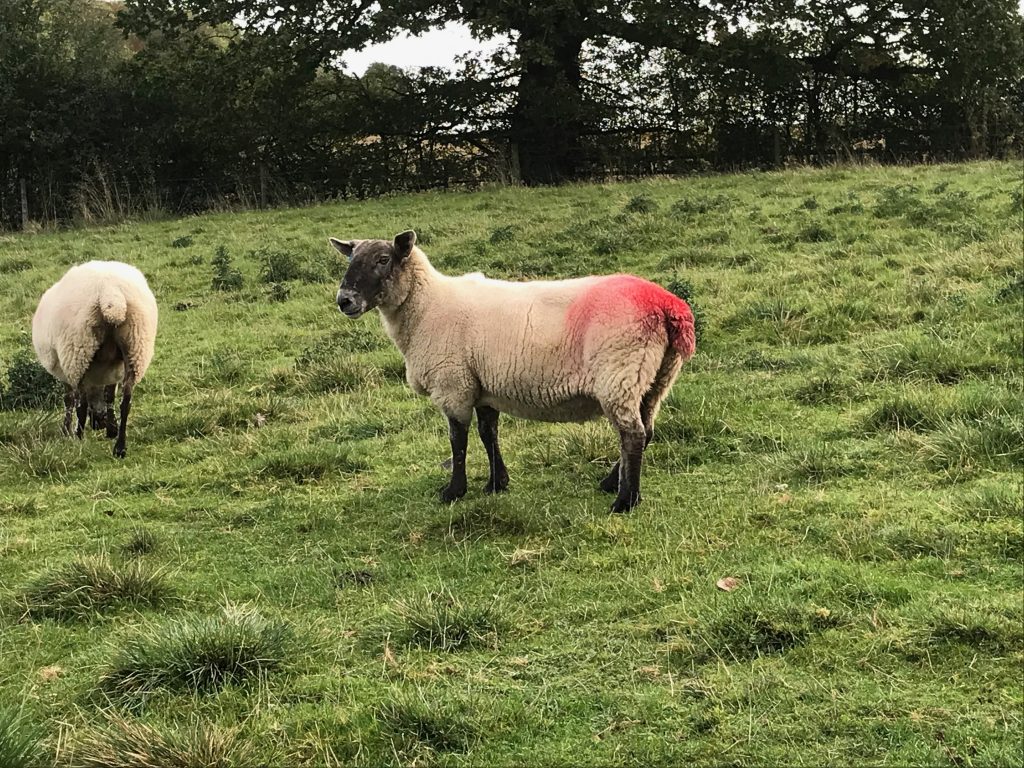
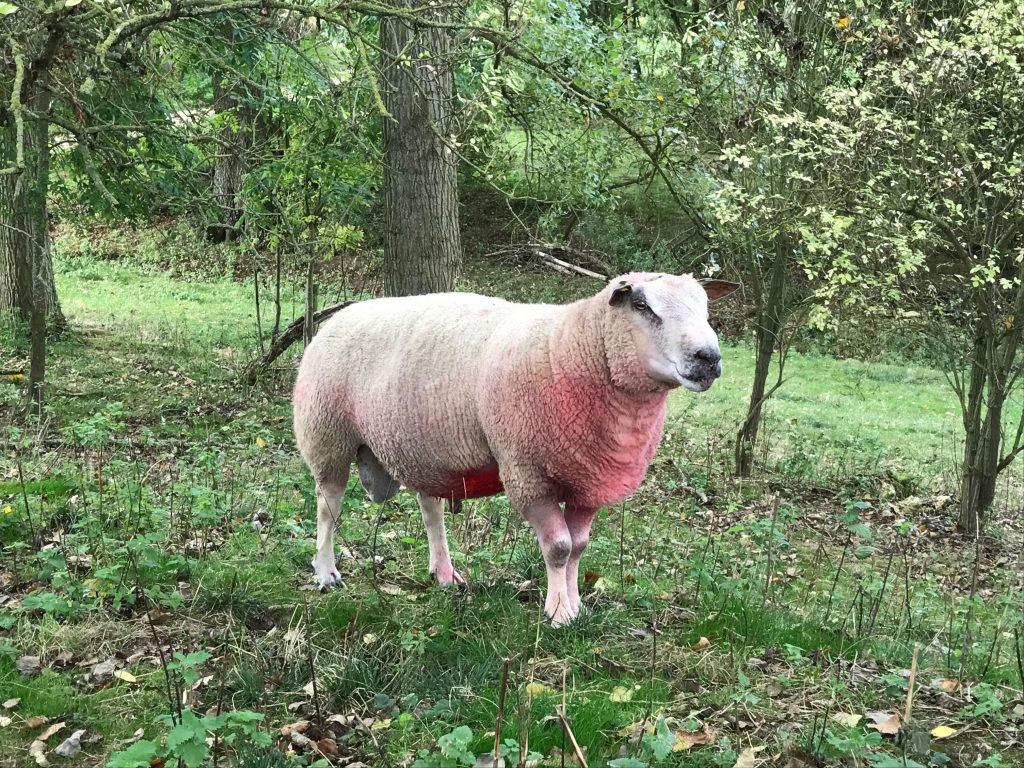
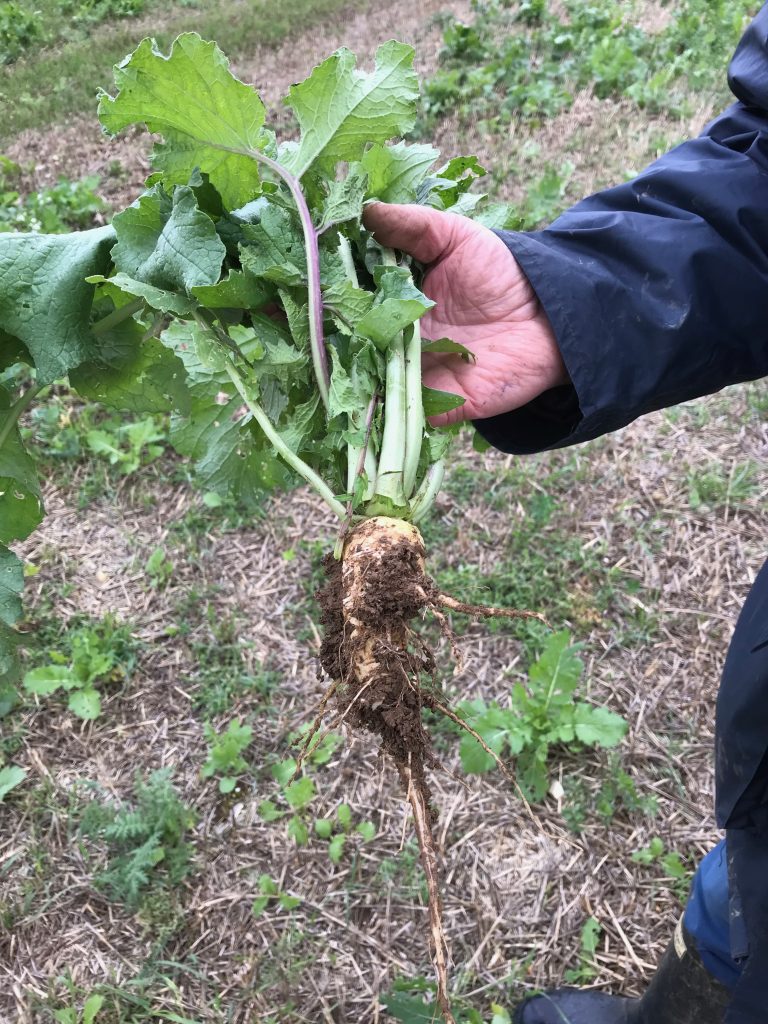

Should we perhaps be replacing subsidised upland sheep with subsidised trees? I can’t think of many economic reasons for keeping them: low value fleece, minimal meat. Have they not just become a means to maintain a countryside look that today we consider natural but historically is man made?
Minimal meat?? Our 1400 ewes produced 1700 lambs, 1300 of which have gone, or will go into the food chain as amongst the most naturally produced grass fed meat available. They graze deep peat soils, which are a tremendous store of carbon. Studies have shown considerably more carbon is sequestered by grazed grass than by coniferous trees. The sheep maintain a landscape that attracts thousands of visitors who enhance the economic viability of the local pubs, shops & tourist accommodation. Plant the uplands with trees & the farmers would go as would much of what makes up a thriving rural community
Would your sheep enterprise survive without subsidy? There were once “thriving” mining communities. Times change. I am not suggesting trees are suitable replacements for all upland sheep but I am prepared to question what is subsidised.
Sheep don’t actually receive subsidy, the land they are on might receive subsidy, but it is up to the farmer what he runs on that land. The old EU style land subsidies are going to gradually disappear over the next seven years, beginning this year, to be partially replaced with environmental schemes, which will not make up the considerable shortfall. We are now being encouraged to dream up other ways of remaining profitable, which is fine whilst prices for our products are good, as at the moment for lamb beef and cereals, but when prices are low, and the new trade deals kick in, god help all of us, especially those on the hills.
Sheep have indeed in some places become a means to keep the countryside in a manner that some may like, and might be seen as traditional, but on the evidence of our recent visit to Northumberland, trees there are often no better than sheep, and in places could indeed be worse for land and climate. At higher altitudes such as on the farm mentioned, deciduous trees do not thrive, but nearby there are thousands of acres of fir trees in plantations, eg Keilder Forest, which don’t support much in the way of a healthy mixed wildlife environment. When the wind blows the trees fall and the roots rip up huge circles of the thin peat soils exposing the bare rock beneath. Where widespread felling has been in progress, the extraction machines gauge their way up and down the slopes, churning the thin soil, which heavy rain will then carry down to the valleys and into the burns. It would make sense to at least plant the rows across the slopes, rather than up and down, thereby reducing erosion, but that would make extraction more difficult.
Bearing in mind this kind of damage, one can build a strong argument that carefully stewarded sheep and cattle grazing of peat soils which have a thick sward of mixed species to protect them, can do more for soil health and carbon sequestration than plantation style forestry. It can also produce a high quality, high density protein source for the human diet.
Hi’ George, good to see satisfactory results from the new drill and sowing system it looks impressive! Another very informative article it certainly keeps me in touch with new ideas on the farm, more of the general public must have benefited from your knowledge and communication skills. Well done you. ‘
‘ Hey- Ho’ Andrew
Great stuff George. Really enjoying your progress into regenerative farming. Surely the only progressive direction of travel especially with volatile input costs.
Many people locally to here are using stubble rakes to combat slugs successfully, you have to start early in the morning though, just the job when you are already tired from harvesting the previous evening.
The new slug pellets are a bit more eco-friendly fortunately.
Will you be borrowing the Roman-mosaic-revealing tractor attachment from your Rutland farmer friend, George?
Dear George,
A little knowledge is a dangerous thing…….seems an apt response.Of course everyone is entitled to their opinion but the reality of partial understanding when you are not walking in people ‘s shoes is worth remembering. Just keep presenting ……for some of us it’s a wonderful insight into a world for which our own skill set can only gaze.
Rogxxxxx
Show off, I dream of wearing out discs… our chunky flint prefers to break stuff rather than wear it out. 😉